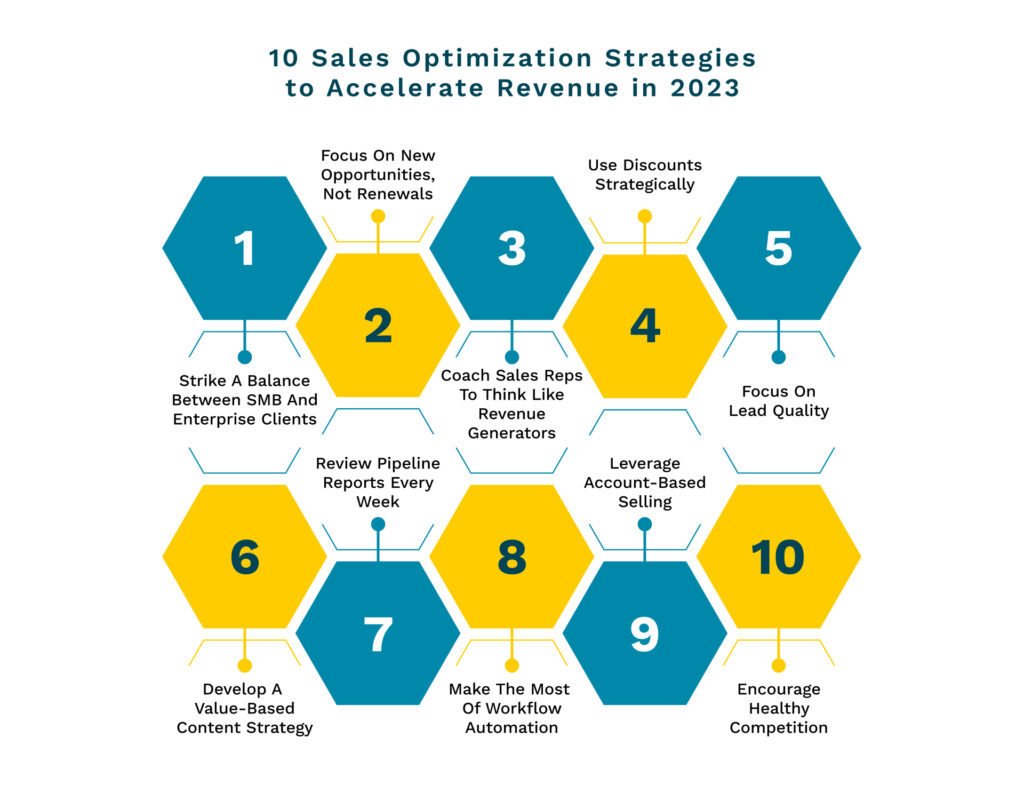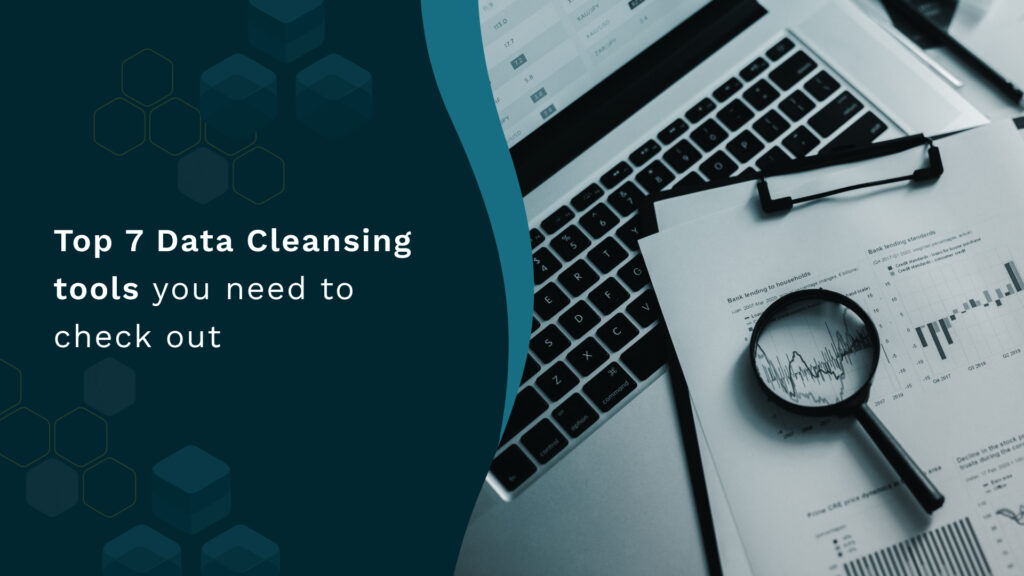Has your sales team been closing deals by offering heavy discounts?
If yes, they are likely hitting quota but your profit margins aren’t that great.
You could live with that for a while.
But if the churn rate is high, then you have a real problem on your hands.
You might not even recoup your selling costs.
Taking away pricing authority from sales reps may not be enough.
The big question is how to carry out sales optimization and make more money.
High-performance teams swear by sales optimization.
It can realign and transform your sales activities into revenue machines.
What is Sales Optimization?
Sales optimization is about incremental changes in your existing sales process to:
- maximize sales effectiveness, efficiency, and productivity and
- drive revenue.
Every change you make can deliver compounded growth over time.
And it’s not trial and error anymore.
What you need to drive sales optimization is high-quality data.
Why does Sales Optimization Matter?
Sales Optimization is a key priority for B2B sales. It can help you
- Identify what’s working currently and what isn’t
- Identify the revenue impact
- Mitigate with short-term and long-term strategies
10 Sales Optimization Strategies to Accelerate Revenue in 2023:
1. Strike a balance between SMB and enterprise clients:
How much of your existing pipeline comprises SMB clients versus large enterprise businesses?
If most opportunities are SMBs, the average deal size will also be modest.
The key to revenue growth is to work towards a 50:50 ratio, depending on your industry or product.
This can give you the best of both worlds – shorter sales cycles (SMBs) and big-ticket deals of $50,000+ (enterprise).
And better cash flow and profits. Don’t forget to:
- Create a feedback mechanism for sales and marketing teams. For example Slack, and joint strategy calls.
- Develop a separate sales strategy for each type of client
- Coach your sales reps on how to differentiate and engage with each type.
2. Focus on new opportunities, not renewals
Renewals are important.
They can increase Customer Lifetime Value (CLV) long term.
But if your goal is to increase revenue in the next 12 months, you should be focusing on new opportunities. (depending on your industry)
If your pipeline is skewed toward renewals, correct it by:
- Giving extra weightage to new opportunities on sales scorecards
- Realigning incentives to new opportunities and upsells – in that order
- Scraping incentives for booking renewals
- Tracking win rates for renewals and new customers as a KPI
3. Coach sales reps to think like revenue generators
40 % of sales reps struggle with it.
It’s a major reason for slow revenue growth.
The key is to compete not on cost but on value.
Clients care the most about how your product contributes to their revenue.
And that’s the area that sales reps need the most coaching on.

Sales managers can:
- Train reps to use the SPIN approach when closing sales
- Prioritize late-stage (negotiation) deals during deal reviews.
- Incentivize reps to sell annual plans rather than monthly plans
4. Use discounts strategically
Discounts can be leveraged effectively to increase deal size.
But first, educate sales reps on when they should and should not use them.
For example: no discounts on monthly plans or single unit sales.
The difference between monthly and annual plans must be compelling enough for clients.
Also, consider:
- Bundling products to increase average order value.
- Setting up a deal desk for complex, high-value deals
- Creating an FAQ sheet for reps to use when negotiating pricing
5. Focus on lead quality
Sales reps often have to do a lot of legwork filtering MQLs and finding the right contacts.
This is because marketing and sales often don’t have a clear definition of a quality lead.
To be fair, it can be different for different industries.
And need a fair amount of trial and error.
Try and:
- Update lead quality parameters before each new campaign
- Leverage buyer intent data to identify high-quality leads
- Focus on creating engagement with personalized messaging
6. Develop a value-based content strategy
Startups and established businesses struggle with communicating their value proposition to their target audience.
This impacts their marketing campaigns – poor lead quality equals poor revenue potential.
The best way to counter this is to “speak the customer’s language”.
To be effective at content marketing:
- Use surveys and testimonials to identify customer pain points.
- Evaluate your existing content for gaps
- Find the right channel mix for content distribution
7. Review pipeline reports every week:
Depending on your revenue goal for 2023, the target for new opportunities could be higher than usual.
But be sure to address the existing challenges first.
Some reps may have had open opportunities for months, causing pipeline bloat.
It is important they understand the indicators for removing inactive leads.
Weekly reviews can help also you identify skill gaps or deal stage concerns they might have.
Also, remember to:
- Update and share the incentive plan with your team
- Streamline deal stages based on the type of client or industry

8. Make the most of workflow automation
Sales reps spend most of their time looking for information.
The right tech can multiply sales productivity.
With templates and tools, you can automate data entry, generate proposals and contracts, etc.
Allow customers to e-sign contracts and you’ll have shrunk payment milestones by weeks.
And perhaps the biggest benefit is CRM data aggregation and enrichment.
The right tools can:
- Integrate contact data across tools and map buyer roles
- Track deal health and identify potential drop-offs
- Support 1:1 coaching with sales performance trend data
9. Leverage Account-Based Selling:
B2B buying decisions are based on a consensus between 8 to 10 people.
And they complete their buying tasks across multiple channels.
By adopting Account Based Selling, sales teams can proactively engage each buyer with a ‘just for you’ value proposition.
From a revenue perspective, ABS provides better upsell and cross-sell opportunities over time.
However, 90% of ABS is developing precise buyer intelligence and messaging based on high-quality data.
Consider:
- Developing data-based attribution models for measuring marketing effectiveness
- Iterating marketing campaigns based on real-time sales intelligence
10. Encourage healthy competition
Competition can bring out the best in your sales reps.
However, there’s a fine line between ‘competing with’ and ‘competing against’ each other.
When this line is crossed, you may notice behaviors like aggressive discounting, leaving inactive opportunities open for too long, misleading customers, or neglecting compliance requirements.
And all of these can result in a revenue impact that you can do without. Empower sales reps by:
- Clearly defining compliance dos and don’ts
- Using GDPR-compliant contact data
- Implementing an approval process for discounts
Think Data-First to Win at Sales Optimization
There you have it.
Sales optimization looks to bridge the gap between past performance and future results.
And that means turning data into intelligence.
As you scale, inefficiencies in data handling can creep in.
Nektar fills the gaps in CRM and provides actionable data.
When you have complete visibility into the pipeline, better insights into deals and opportunities will follow.
And you’ll know exactly how to accelerate revenue.
Optimize every step of your sales process with Nektar – from lead to cash.
Request your free scan for missing CRM data today!
Meta content
Sales optimization is knowing where the loopholes are. And data is your pathfinder. Here’s how to get around sales process bottlenecks and drive revenue.








